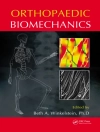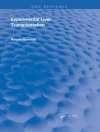Invasive electromyography is a well-established diagnostic tool that has been used for decades by neurologists. Recently, new and alternative devices have increasingly become available that permit diagnosis without the use of needles. This developing area of science and the new tools have not, however, been sufficiently investigated in academic training. Consequently a gap exists between what science is making possible and the competence acquired during graduate studies. This handy volume has the aim of filling this gap by providing the information required by medical practitioners in rehabilitation, sports, and occupational health as well as by rehabilitation therapists, ergonomists, and sport coaches. The techniques that are presented and explained will help in monitoring and recording changes, evaluating the effectiveness of treatments and training, evaluating work stations, and preventing and documenting the evolution of occupational disorders of the neuromuscular system.
Cuprins
Introduction and Applications of Surface EMG.- Basic Concepts Concerning Fields and Potential Distributions of Stationary and Moving Point Sources.- Generation, Propagation, and Extinction of Single-Fiber and Motor Unit Action Potentials.- EMG Imaging: Geometry and Anatomy of the Electrode-Muscle System.- Features of the Single-Channel s EMG Signal.- Features of the Two-Dimensional s EMG Signal: EMG Feature Imaging.- Applications of s EMG in Dynamic Conditions, Ergonomics, Sports, and Obstetrics.












